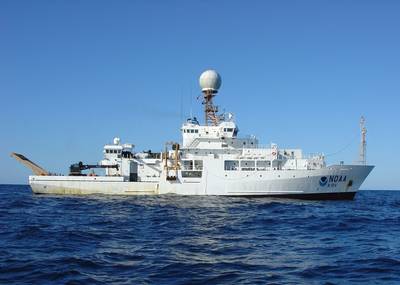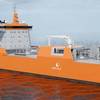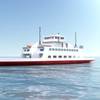Markey Wins Deal to Refurbish Winches for NOAA Research Vessel
Seattle-based deck machinery company Markey Machine said it has recently secured a contract from Bollinger Mississippi Shipbuilding for winch refurbishment aboard NOAA research vessel Ronald H. Brown. The three Markey oceanographic winches that have been aboard for 27 years will receive varied upgrades.
“NOAA is working to maximize the service life of each of its vessels, in part by investing in mid-life repairs,” said Jamie LeCompte, NOAA Ship Ronald H. Brown project manager. “Upgrading and refurbishing these winches is an important part of making the Brown more efficient, cleaner for the environment, and safer to operate, and will keep the ship meeting the needs of the nation well into the next decade."
Markey’s winches were similarly acknowledged recently aboard the R/V Atlantic Explorer, a NOAA partner-vessel operated by BIOS/Arizona State University.
Rick Verlini, Port Captain of the Atlantic Explorer, said, “We all appreciate how much Markey has done for the R/V Atlantic Explorer. I can’t entirely express my deepest gratitude and appreciation for the invaluable support and assistance of Markey, but especially from John C. Davis, Bob LeCoque, and AJ Wheatley, who have an unwavering dedication to delivering exceptional service, expertise, and steadfast support going above and beyond, that has set Markey apart as an industry leader.”
Markey said its work aboard NOAA’s Ron H. Brown will include modification of level wind on the DESH-5 Deep Sea Winch. The DESH-5 Two-Sheave level wind is the single most complex subassembly on the winch, engineered to six figures.
According to Markey, its chain-sprocket diamond-screw has distinct advantages over a standard ACME-type screw. First, the Markey diamond-screw is self-reversing, in the sense that the groove does not end. Second, at both extremes of travel, the thread actually turns the blade of the shuttle. The effect of the blade, following the continuous screw thread as it turns parallel to the drum flanges and in the opposite direction, is evident as the carriage stops--for a few seconds--next to the drum flanges before restarting movement in the reverse direction. This stop is commonly called the “dwell”.
The Two-Sheave level-wind unit also simplifies varied processes at work in earlier three-sheave units, while enhancing safety features. For example, the unit has no reverse bends in the cable path, thereby lengthening cable service life. In addition, the need for a winch turntable (platform) is eliminated by use of rotating flagging sheaves. Mechanical actuation, by use of a hand-wheel directly coupled to the diamond screw, significantly reduces overall level-wind cost, as well as complexity, in the absence of extra sensors, motors, and VFDs. Markey will complete work in 2024.
Commissioned in 1997, the oceanographic and atmospheric research vessel Ronald H. Brown measures 274 feet long and displaces more than 3,200 tons, making it the largest ship in the NOAA fleet. The vessel is equipped with a suite of instruments for collecting and assessing scientific data above and below the ocean surface. Onboard cranes and winches enable the vessel to support the use of heavy scientific equipment such as submersibles and surface floats.











